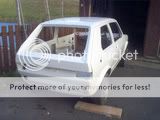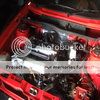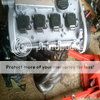K-jet made easy!!!
Posted
#1110061
(In Topic #132727)
Old Timer

K-jet made easy!!!

This form of mechanical fuel injection has been used on the internal combustion engine for many years. Mechanical fuel injection systems first saw light of day at the turn of the century, however the following 100 years has seen the system evolve from a very basic and almost crude fuel delivery system, to the recent mass produced versions of the Bosch K and KE Jetronic. The mechanical fuel injection system has recently been overshadowed by modern electronic injection, which enables the use of lambda closed loop control. The electronically modified Bosch KE also has this capability although it never achieved the popularity of the pure mechanical system.
The system may seem very complicated at first, but it can be broken down into specific areas and fault finding is therefore made easier.
Fuel is delivered from the fuel pump to a metering (or fuel distribution) head and depending on the engine's temperature, the correct amount of fuel is delivered via the injectors to the engine. The injectors on this system spray fuel continuously in a fine atomised spray into the inlet manifold.
Cold start and the warm-up period are also catered for by a cold start injector and a reduction in the control pressure. The idle speed is increased by the auxiliary air valve.
The fuel pump will have the ability to provide a huge amount of fuel from the tank of which 99% will be returned. Due to the nature of this system, specialised equipment may be needed.
15.1.2 The Fuel Tank
The fuel tank is the obvious place to start in any fuel system explanation - unlike the tanks on early carburetor fuelled engines it is a sealed unit. This allows the natural gassing of the fuel to aid delivery to the pump by slightly pressurising the tank It may be noted that when the filler cap is removed, pressure is heard to escape. Filler caps are no longer vented as previously found.
15.1.3 The Fuel Pump
This type of high pressure fuel pump is denoted as a roller cell pump, with the fuel entering the pump and being compressed by rotating cells that force it through the pump at high pressure. The pump is capable of producing a pressure of 8 bar (120 psi) with a delivery rate of approximately 4 to 5 litres per minute.
Within the pump is a pressure relief valve that lifts off its seat at 8 bar to arrest the pressure should the filter, fuel lines or other eventualities cause it to become obstructed. The other end of the pump (output) is home to a non-return valve that, when the voltage to the pump is removed, closes the return and maintains pressure within the system, as illustrated in figure 6.1.
The normal operating pressure within this system is approximately 5 bar (75 psi) and at this pressure the current draw on the pump is 5 to 8 amps. Fuel passing across the fuel pump's armature will be subjected to sparks and arcing, this on the surface appears quite dangerous, but the absence of oxygen means that there will not be an explosion!
Some systems operate a small lift pump situated inside the tank. The supply voltage to the pump in the majority of cases is 12 volts.
Some systems do however operate at 6 volts, and see a higher voltage under cranking to pressurise the system faster. This voltage reduction is made possible by using a ballast resistor, which is then by-passed when cranking.
The voltage supply to the pump is via the fuel pump relay.

Figure 15.1.1 shows a cross section of an electric fuel pump.
15.1.4 The Injectors
The injectors fitted to this system will open at a predetermined pressure and will spray a fine atomised 'mist' of fuel behind the inlet valve, waiting to be drawn in on the induction stroke. The fuel is delivered into the engine in a continuous spray and is not timed or pulsed as on other systems. The opening pressure of the injector is at approximately 3.3 bar at which point fuel is injected into the manifold; when the injector pintle opens this will cause the pressure to drop, subsequently closing the injector, which causes the pressure to rise once again and this will of course open the injector. This pintle vibration is called 'chatter' and helps to atomise the fuel before it's induction.
When the engine is switched off the fuel pressure drops below 3.3 bar and the injector closes forming a fuel tight seal, helping to avoid fuel dripping into the inlet manifold.
The spray pattern should be a conical shape and when clean and working efficiently, should emit a high frequency noise: this is the sound of the pintle 'chatter'.

15.1.5 The Fuel Pump Relay
This type of relay is known as a tachometric relay, which means that it only responds and sends a voltage to the pump when the engine is cranking or running. The relay receives a signal from the negative terminal of the coil - this confirms that the engine is turning. This type of relay is used as a safety device: if the vehicle is involved in an accident when there is a possibility of a fuel line being fractured, the engine will stop due to a lack of fuel, the signal from the coil stops and the supply voltage to the pump is removed.
Typical fuel pump relay connections are as follows:
Terminal Number - Connection
30 - Permanent battery live
31 - Earth
1 or 31b - Coil negative
15 - Switched 'Ignition on ' voltage
87 - Output to fuel pump
NOTE :- while the connections are correct for certain vehicles, the appropriate pins must be identified before testing. Certain relays also perform a pressurisation purge by allowing the pump to run for a second before shutting off, to prime the system.
The location of the relay will vary between motor manufacturers and is in no set position.
When fault finding or fuel pressure testing it will be necessary to have the pump running when the engine is stationary, this can be achieved by bridging terminals 30 and 87 with a small length of wire. For safety reasons it is good practice to insert a ten amp fuse into the bridging wire.
If the engine runs for a while but then stops, failing to restart for a few minutes, feel the relay to see if it is getting warm as this could be the faulty area. Bridging with the fused link wire will confirm the problem.
CAUTION :- do not be tempted to by-pass the relay by bridging between terminal 15 (switched live) and 87 (fuel pump) as this will start the car, but is potentially dangerous.
15.1.6 The Accumulator
The accumulator is the first of the components in the fuel system after the pump. This unit has an important role to fill in the operation of the Bosch K Jetronic system.
Its first job is to help smooth out any pulses in the flow of the fuel, this is achieved by passing the fuel through a series of baffles and into a chamber giving it slight capacitance and a much smother flow. Its other and possibly more important role is to maintain pressure within the system when the fuel pump has been switched off; this is achieved by the accumulator spring and diaphragm pushing against the fuel.
For the duration that the engine is running, the diaphragm will be against its stop within the spring's chamber. When the engine is stopped and all of the non-return valves close, the spring pressure against the diaphragm will maintain the residual or holding pressure and overcome any slight seepage.
Within the data books for this system, it is shown that the critical time for maintaining these pressures, is between 5 and 20 minutes. After a journey, when the engine is switched off, the under bonnet temperature increases causing the fuel in the lines to heat and it attempts to evaporate.
Maintaining the pressure eliminates this problem and ensures a clean start when the vehicle has been standing with a hot engine.

Figure 15.1.2 shows an accumulator full of fuel.
15.1.7 The Fuel Filter
Due to the extremely fine tolerances within the Bosch K Jetronic system, it is vital that the filter has excellent filtration properties without impeding the flow on the fuel. The filter is a large metal canister with different fittings at either end to avoid the unit being installed incorrectly and compromising its efficiency. A visual inspection of the filter is not possible but the current draw of the fuel pump, measured in amps, can indicate a blocked or obscured filter.
The current can be recorded by inserting a multimeter in series with the circuit, the usual place to do this is to bridge the relay's terminal block. If however the relay is not easily accessible the fuse to the pump can be removed as this also provide a convenient place to measure the current.
A typical current draw will generally be between 5 to 8 amps. The current recorded will be lower if the systems pressure is less than the quoted specifications and higher if the flow of fuel is restricted in any way, for example: a blocked filter or a damaged fuel line.

Figure 15.1.3 shows an example fuel filter.
15.1.8 Systems Pressure
This is the pressure that is seen within the system between the fuel pump and the metering head. This pressure is determined by the primary pressure regulator, situated within the metering head.
When the required pressure is obtained, the plunger within the regulator lifts off its seat and excess fuel is returned to the tank.
This system due to the nature of its operation will automatically compensate for different fuel demands under different conditions. For example if the fuel requirement is low at engine idle, the plunger will lift and return a greater volume of fuel back to the tank than when the demand is higher, when a smaller amount of fuel is returned.
When the engine is switched off, the fuel pump relay looses the coil negative signals that energise it and the voltage to the pump is removed: this subsequent loss of pressure will cause the primary pressure regulator to close. This action subsequently blocks the return flow to the tank and helps the accumulator to maintain pressure in the system.
The systems pressure is determined by the tension of the spring reacting against the plunger, if a higher pressure is required, small shims can be placed behind the spring, changing it's effective length and increasing the pressure. A shim of approximately 2 mm will increase the pressure by about 10 psi
Located within the pressure regulator is the transfer valve. This component is operated by the movement of the plunger and opens as the plunger moves off it's seat. The transfer valve's function is to block the return flow of fuel from the warm-up-regulator back to the tank, also helping to maintain residual or holding pressure.

Figure 15.1.4 shows the fuel distributor, primary pressure regulator and air flow sensor from the Bosch K Jetronic system.
The following table is a guide to the fuel paths marked by each blue arrow in figure 6.4.
A -To fuel injectors
B -To warm up regulator
C -From warm up regulator
D -To cold start injector
E -From fuel filter
F -Return to fuel tank
15.1.9 The Airflow Sensor
The airflow sensor, in most cases, is located on the air filter housing and is responsible for measuring the amount of air entering the engine. The sensor housing is conical in shape, into which the airflow sensor plate is fitted. The airflow sensor plate lifts as the throttle is opened by the incoming air.
The amount of lift is proportional to the volume of air entering the engine. The shape and angle of the cone will determine this ratio.
A neutral plate position is normally level with the bottom of the cone, this is adjustable by bending a small clip / spring that acts as a stop at the bottom of the unit. The purpose of this spring is to allow the flap to move beyond its neutral position to allow excessive pressure to escape if the engine was to backfire, passing a large volume of air back into the air filter housing.
If the system did not have this facility the pressure could split or blow off the rubber air trunking. Any splits or ill fitting air hoses that allow unmonitored air into the engine require rectification.
As the airflow lifts the sensor plate this subsequencially lifts the control plunger - the higher the lift the greater the amount of fuel delivered to the injectors.
To adjust the fuel mixture a small 3 mm Allen screw is located within the airflow sensor; this alters the relationship between the sensor arm and the control plunger. Turning the screw clockwise enriches the mixture and vice-versa. It should be noted that the screw should be turned in very small increments and the Allen key should be removed before the engine speed is raised.
NOTE :- Failure to remove the Allen key, before starting the engine, can result in damage to the airflow sensing unit.
15.1.10 The Fuel Distribution Unit
This unit delivers the correct amount of fuel to the engine via the injectors referencing to the airflow sensor plate height. As the sensor plate is lifted with inducted air volume, the control plunger is lifted proportionately, exposing small slits within the fuel distributor's barrel assembly. The barrel assembly has a series (one for each cylinder) of small slits that are machined into the barrel, and it is through these openings that the fuel passes en-route to the injector.
The width of these metered slits is only 0.2 mm across and it is this dimension, together with the plunger height, that determines the fuel delivery rate to the injectors.
At low engine speed the air volume into the engine will be minimal, this will only raise the plunger a small amount giving the requisite quantity of fuel for these engine conditions. As the throttle is opened and fuel demand is higher, the plate raises, which in turn lifts the plunger and a higher volume of fuel is delivered to the engine to match the air. The lift on the plunger will be proportionate to the air volume, this will however be exaggerated during the warm-up period when additional fuel is required by reducing the pressure acting onto the top of the control plunger.
This pressure is called the control pressure (as it controls the lift of the plunger under different operating temperatures) and is determined by the warm-up-regulator.
15.1.11 The Warm-up-Regulator
This simple device is responsible for controlling the amount of fuel delivered to the engine during it's warm-up period. The pressure acting upon the top of the control plunger varies depending on the engine temperature and provides an effective method of enrichment.
The control pressure is tapped off from the primary pressure circuit in the metering head's lower chamber through a tiny restrictive hole which gives it the ability to differentiate between the two pressures. A flexible pipe then connects the control plunger gallery to the warm-up-regulator and returns back to the metering head to a connection next to the primary pressure regulator's transfer valve. This valve is in the circuit to close the fuel from the control circuit when the engine is off, avoiding the total loss of system pressure while the engine is stationary.
The internals of the warm-up-regulator are quite simple comprising an inlet and outlet port, a stainless steel shim, a bi-metalic heated strip and a spring.
The input to the warm-up-regulator flows into a small chamber in the top of the unit, its return is through a small drilling and back to the metering head. By controlling this return flow it will cause a change in pressure acting on the top of the control plunger. With a cold engine the flow must be fairly free giving it a lower pressure. This will allow a higher lift of the plunger which in turn will enrich the mixture under these conditions. The free flow is obtained by the internal bi-metalic strip exerting a downward pressure on the spring which decreases the pressure acting upon the shim, this lower force allows the fuel to flow almost uninterrupted.
As the bi-metalic strip is heated, by either it's heater element or natural heat soak from the engine, the downward pressure acting on the spring is gradually decreased, increasing the force of the spring, which in turn increases the control pressure.
Typical cold engine control pressure will be as low as 1.0 bar increasing over approx. 10 minutes to around 3.5 bar. Some warm-up-regulators have a vacuum connection that will sense a drop in vacuum and lower the control pressure during these acceleration periods.
The voltage supply to the regulator is from the fuel pump relay, because if the ignition was on without the engine running, all enrichment would be removed as the bi-metalic strip would be heated prematurely and the driver would not benefit from the cold engine enrichment.
The two pipes that connect to the warm-up-regulator have different sized 'banjo unions' to avoid them being connected incorrectly. The control pressures quoted are as an example only and reference should be made to the technical data as these pressures can be specific to the part number located on the unit's housing.
This unit will have a resistance value of approximately 20 to 26 Ohms.
NOTE :- it is important to disconnect the electrical connection to the unit before any pressure testing on the control circuit is performed as this will prematurely heat the bi-metalic strip and cold control pressures will not be available.

Figure 15.1.5 shows a diagram of a warm up regulator.
The connections shown in figure 15.1.5, marked with blue arrows are listed below:
A -Vacuum connection (inlet manifold)
B -Return to fuel tank
C -Control pressure (from fuel distributor)
15.1.12 The Cold Start Injector
To aid the starting of the engine an additional injector is located into the inlet manifold, this sprays fuel into the engine at systems pressure when the engine temperature is cold and the starter motor is activated. The length of time that this additional injector sprays is determined by the engine's temperature, seen by the thermo time switch.
The thermo time switch provides the earth path for the cold start injector via a heated bi-metalic strip, this heater is activated by a voltage from the starter motor. As the strip heats, over a period of approximately 8 to 10 seconds (when cranking only), the legs on the bi-metalic strip separate and the earth path is lost.
A warm engine will perhaps only require 2 seconds before the circuit is broken and a hot engine will already show open circuit. This simple circuit is to avoid the engine being flooded when cranking and the additional enrichment only given when essential, see illustration below.

Figure 15.1.7 shows the relationship between the thermo timer switch and the cold start injector.
15.1.13 The Auxiliary Air Valve
This item is a device to aid the engine when cold by opening a small port to increase the engine's idle speed. The fast idle control is achieved by the port being held open by a bi-metalic strip that when heated by it's own heater element, or via natural heat soak from the engine, the port closes. The voltage supply to the air valve is the same as the feed to the fuel pump and the warm-up-regulator. If it is found that the idle speed will not reduce and that the speed is maintained artificially high when warm, clamp the rubber pipe between the air valve and the inlet manifold. If this action causes the engine rev's to return to normal, the fault is within a sticking auxiliary air valve.
It is worth cleaning the valve, lubricating it and re-test it's operation. The internal heater element can also be checked for continuity using a multimeter.

 Last edit: by Lee_dub
Last edit: by Lee_dub
Posted
Settled In


Mk1'83 G60
Mk1'82 2.0L 8v
Mk1'93 GTI Sportline
Mk1'82 2.0L 8v
Mk1'93 GTI Sportline
Posted
Old Timer

Posted
Old Timer

geejah said
Wow! Not all of it's over my head! May also have helped give another possibility to my running issues…struggles under load with under half a tank…will be cleaning out the tank and changing fuel pumps etc. But thinking about it, this started after I changed the filler cap for an aftermarket jobby…so it seems it could be that too. Or am I barking up a wrong tree here?
Yes mate unfortunately you are, the car should still run with the cap off completely.
You could quite likely have a blockage in the tank, pump or even in the pipe between the tank and pump. Best thing to go first is lift the cap ontop of the petrol tank (remove the rear seats) and have a look in there with a torch. There is a little mesh filter thing in the bottom that you can pull out with a pair of needle nose pliers to clean. then there is a mesh filter as part of the pump assembly.
Posted
Old Timer

Posted
Old Timer

Posted
Old Timer

Posted
Old Timer


Posted
Old Timer

Its far too useful to keep loosing it.
Posted
Old Timer


Posted
Settled In

MY80 GTI | MY07 GTI | MY10 S3
Posted

Old Timer


Posted
Chairman




Is it ok to add to the FAQ section??
Posted
Settling In

my mk1 golf gti cab runs but its performance is week
on a warm start it takes about 2 mins of cranking the engine for it to start but from cold it fires up strait away
when running it splutgter when i put my foot down in nutral but only up to 2.5/3000 revs then it clears
when in drive its very slow to pick up and missfires slighty when keep at around 3000 revs
ive changed the pump, filter and ignition moudual also checked the fuel pressure at top of meetering head and is just pushing round 5 bar
any idears
jake
Posted
Settling In

Posted
Settling In

Posted
Settling In

Posted

Moderator

IvanT said
I cannot open the pictures in this post! Can anyone help/advise?
Looks like the pics have either been taken down or moved mate. Try sending a PM to Lee
Posted
Guest user
Posted
Old Timer

Its been a long time since I logged in, over 2 years!
Life has taken over a bit.
The pictures pointed to links hosted on another website, that appears to have gone down.
Ill try and dig around to see if I can find the original document.
0 guests and 0 members have just viewed this: None.













